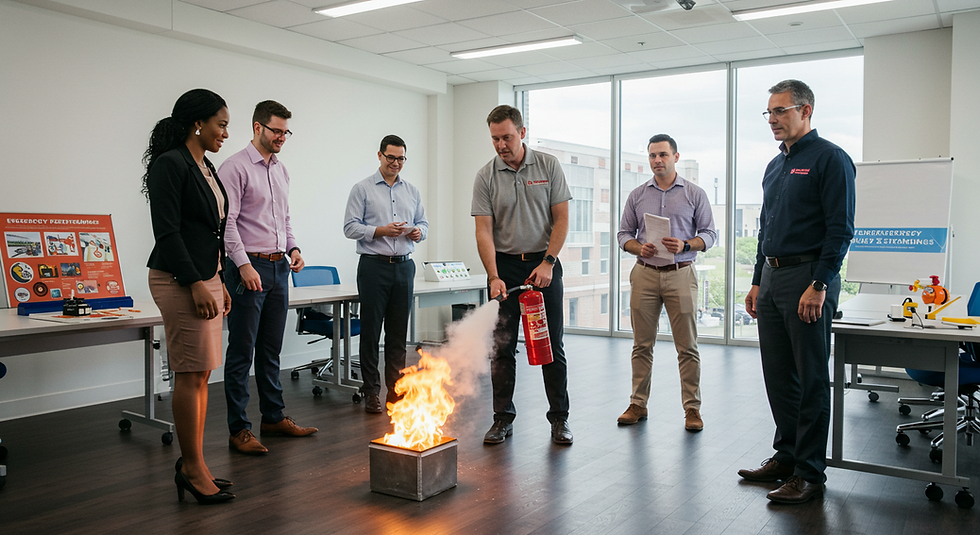What Are the 5 E’s of Workplace Safety?
- CrisisWire

- Sep 27
- 2 min read
When it comes to workplace safety—whether in schools, corporations, or government agencies—policies alone aren’t enough. To reduce accidents, prevent violence, and ensure compliance with regulations like OSHA and DHS safety standards, leaders need a clear framework.
One of the most effective models used across industries is the 5 E’s of Workplace Safety: Education, Engineering, Enforcement, Evaluation, and Encouragement.
These pillars help organizations move from reactive safety programs to proactive cultures of prevention. Here’s what each “E” means in practice:

1. Education
Training is the foundation of safety. From fire drills in schools to workplace violence prevention workshops in corporate America, continuous education ensures that every employee, student, or staff member knows what to do before a crisis hits.
✔ Examples:
Active shooter training on campuses.
OSHA safety modules for warehouse employees.
FEMA-certified emergency planning workshops for universities.
2. Engineering
Safety starts with design. Engineering focuses on building physical and technological safeguards into the environment.
✔ Examples:
Installing access control systems in schools.
Using ergonomic designs to prevent workplace injuries.
Reinforcing doors and windows to delay intruders.
3. Enforcement
Rules only matter if they’re followed. Enforcement ensures compliance with safety policies, visitor management systems, and emergency response protocols.
✔ Examples:
Security staff ensuring badges are worn at all times.
HR enforcing reporting systems for workplace violence.
Campus officers ensuring Clery Act compliance.
4. Evaluation
What gets measured, gets managed. Evaluation involves regularly testing systems, reviewing drills, and auditing weaknesses.
✔ Examples:
Running unannounced lockdown drills in schools.
Conducting quarterly workplace safety audits.
Reviewing after-action reports from real incidents.
5. Encouragement
Safety culture only works when people feel invested. Encouragement builds buy-in by recognizing safe behavior and reinforcing shared responsibility.
✔ Examples:
Rewarding departments with the highest compliance rates.
Creating anonymous reporting systems so staff feel safe speaking up.
Publicly recognizing employees or students who demonstrate leadership in safety.
Why the 5 E’s Matter
Workplace safety isn’t just about compliance—it’s about protecting lives, preventing lawsuits, and building trust. When schools, corporations, and government agencies implement the 5 E’s effectively, they reduce accidents, deter threats, and create safer environments for everyone.
At CrisisWire, we help institutions apply these principles through threat assessments, emergency planning, insider-threat prevention, and access control consulting.
📩 Contact us today: crisiswire@proton.me
📚 Recommended Reading:





Comments